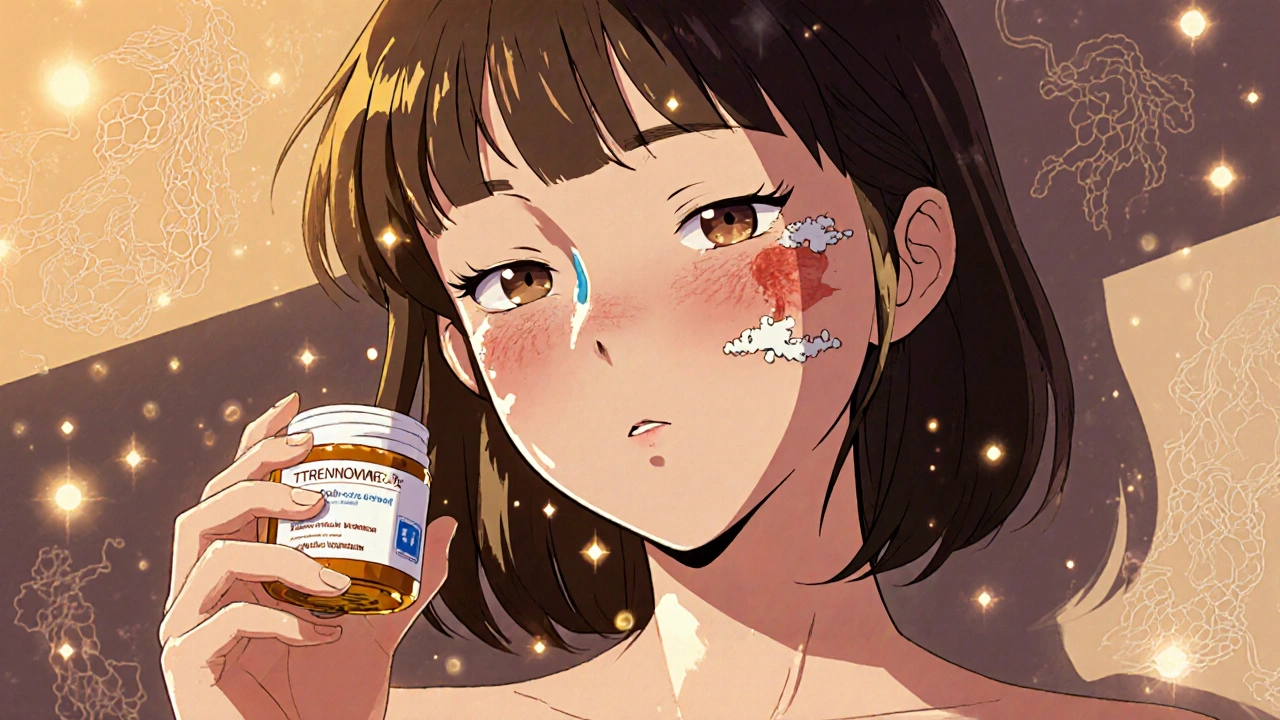
Most people start with tretinoin 0.025% because it’s the gentlest prescription retinoid. But if your skin reacts badly, or you don’t see results after three months, you might wonder: tretinoin 0.025 is it really the best option? Or are there better alternatives out there?
What tretinoin 0.025 actually does to your skin
Tretinoin 0.025% is a form of vitamin A, prescribed for acne, fine lines, and uneven skin tone. It works by speeding up how fast your skin cells turn over. Instead of dead cells piling up and clogging pores, they slough off faster. That’s why it clears acne and smooths texture. It also boosts collagen, which helps reduce wrinkles over time.
But here’s the catch: tretinoin 0.025% isn’t magic. Most people see mild improvements in 8-12 weeks. Full results take 6-12 months. And if your skin is sensitive, you’ll likely get redness, peeling, or burning-especially in the first few weeks. That’s called retinization. It’s normal, but it’s not fun.
Adapalene 0.1%: The over-the-counter alternative
Adapalene 0.1% (sold as Differin Gel) is the closest thing to tretinoin 0.025% that you can buy without a prescription. It’s a third-generation retinoid, designed to be less irritating. Studies show it’s just as effective as tretinoin for acne, but with fewer side effects.
One 2018 clinical trial found that adapalene reduced acne lesions by 54% after 12 weeks, compared to tretinoin’s 58%. The difference was tiny. But the number of people who quit due to irritation? Half as many with adapalene.
Adapalene doesn’t work as well for wrinkles as tretinoin does. It’s focused on acne and pore refinement. If your main goal is clearing breakouts and you hate the burning sensation from tretinoin, adapalene is your best bet.
Tazarotene 0.05%: Stronger, faster, but harsher
If tretinoin 0.025% isn’t doing enough, tazarotene might be the next step. It’s a stronger retinoid-often prescribed at 0.05% for acne or 0.1% for wrinkles. Tazarotene works faster than tretinoin. In studies, it reduced acne by 65% in 12 weeks, while tretinoin hit 58%.
But it’s also more irritating. A 2020 review in the Journal of Clinical and Aesthetic Dermatology found that 42% of users stopped tazarotene due to dryness or redness, compared to 28% for tretinoin. It’s not for beginners. If you’ve already tolerated tretinoin 0.025% for 3-6 months and still have stubborn acne or deep wrinkles, tazarotene could be worth trying.
Retinol: The drugstore option
Retinol is the form of vitamin A you find in drugstore creams. It’s weaker than tretinoin because your skin has to convert it into retinoic acid-the active form-before it works. That conversion is slow and inefficient. Only about 1 in 20 retinol molecules actually become active.
So if you’re using a 1% retinol cream, it’s roughly equivalent to 0.01% tretinoin. That’s why retinol takes longer. You might need 6-9 months to see results, and even then, it won’t match tretinoin’s power for acne or deep wrinkles.
But here’s the upside: retinol is much gentler. If you’re new to retinoids or have rosacea, eczema, or very sensitive skin, retinol is the safest entry point. Look for products with encapsulated retinol or time-release formulas-they’re less likely to cause irritation.
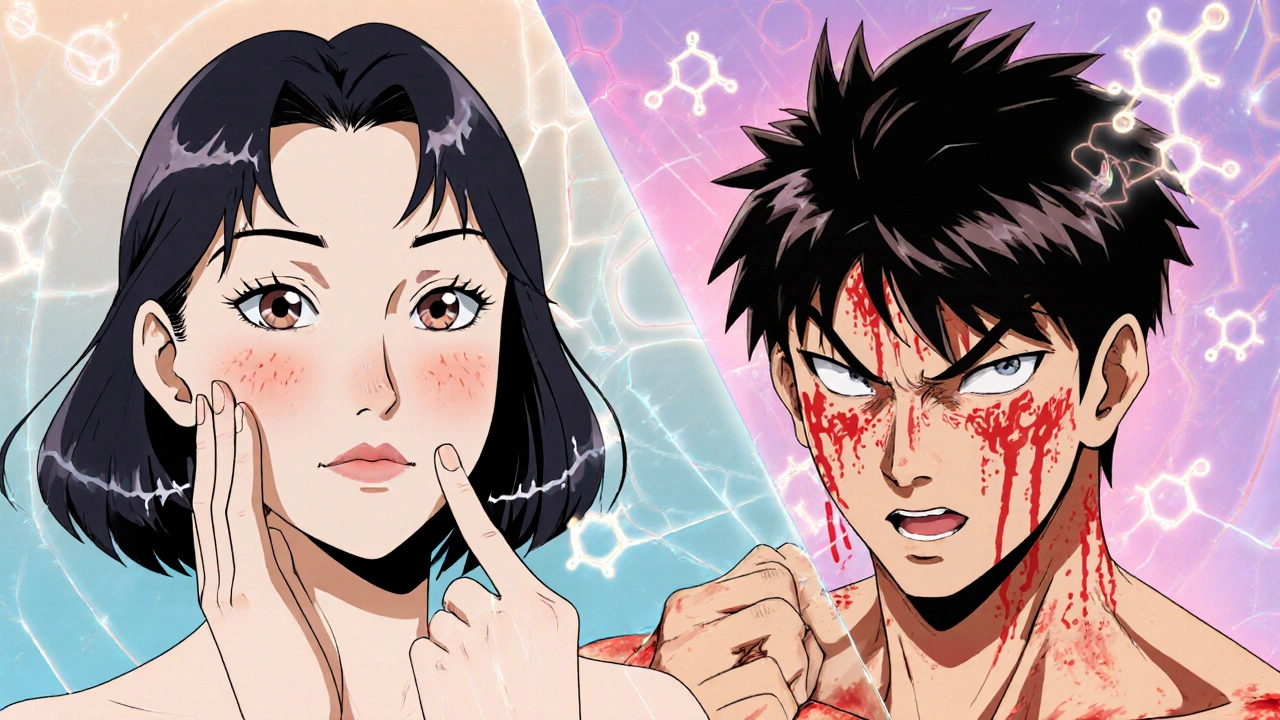
Other options: Bakuchiol, niacinamide, and peptides
Some people swear by bakuchiol, a plant-based alternative marketed as “natural retinol.” It’s derived from the babchi plant. A 2020 study in the British Journal of Dermatology compared 0.5% bakuchiol to 0.025% tretinoin over 12 weeks. Results were similar for wrinkles and pigmentation. But the bakuchiol group had zero peeling or redness.
That’s promising-but bakuchiol doesn’t treat acne. If you’re using tretinoin for breakouts, bakuchiol won’t replace it.
Niacinamide (vitamin B3) is another popular alternative. It reduces redness, controls oil, and improves skin barrier function. It won’t speed up cell turnover like retinoids, but it pairs well with them. Many dermatologists recommend using niacinamide before or after tretinoin to reduce irritation.
Peptides are even gentler. They signal your skin to make more collagen, but they don’t affect cell turnover. They’re great for anti-aging if you want zero irritation, but they won’t clear acne or unclog pores.
Who should switch from tretinoin 0.025%?
You might need a different option if:
- Your skin is too irritated-red, flaky, burning-even after using it every third night
- You’ve used it for 6+ months and still have active acne or deep wrinkles
- You’re pregnant or breastfeeding (tretinoin is not safe during pregnancy)
- You can’t afford prescription refills or don’t want to see a dermatologist
If irritation is your main issue, try adapalene 0.1% first. It’s the most direct swap. If you want stronger results and can handle side effects, go to tazarotene. If you’re looking for something gentle and natural, bakuchiol or retinol are safe bets.
How to switch safely
Don’t just stop tretinoin and start something new. Your skin needs time to adjust.
- Stop tretinoin for 1-2 weeks to let your skin recover
- Use a gentle moisturizer with ceramides or hyaluronic acid
- Start the new product 2-3 times a week, at night
- Wait 4-6 weeks before increasing frequency
- Always use sunscreen-every retinoid makes skin more sun-sensitive
If you switch to tazarotene or adapalene and still get irritation, reduce usage to once a week. Patience is key. Retinoids are not overnight fixes.
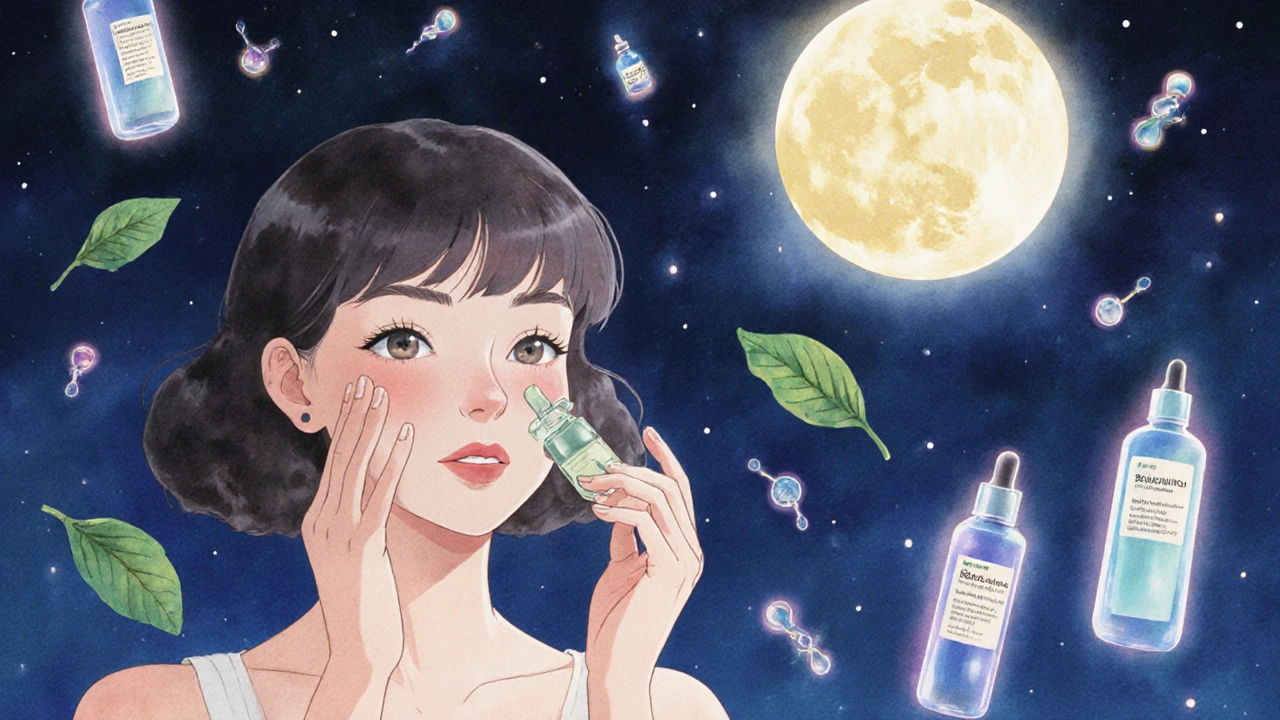
What most people get wrong
Many think switching to a stronger retinoid will fix slow results. But often, the problem isn’t strength-it’s consistency. Tretinoin 0.025% works if you use it every night for 6 months. Most people use it 2-3 times a week, get frustrated, and quit.
Another mistake: layering too many actives. Using tretinoin with vitamin C, AHAs, and benzoyl peroxide at the same time? That’s a recipe for irritation. Stick to one retinoid at a time. Let your skin breathe.
And don’t assume natural = better. Bakuchiol is gentler, but it’s not more effective. If you need to clear acne, nothing beats a proven retinoid.
Final verdict: What to choose
Here’s the simple guide:
| Goal | Best Option | Why |
|---|---|---|
| Acne + mild irritation | Adapalene 0.1% | Just as effective as tretinoin, less burning |
| Deep wrinkles, stubborn acne | Tazarotene 0.05% | Strongest option, fastest results |
| First-time user, sensitive skin | Retinol 1% or bakuchiol 0.5% | Gentle, low risk of irritation |
| Reduce redness while using retinoid | Niacinamide 5% | Calms skin, boosts barrier |
| Anti-aging without retinoid | Peptides + sunscreen | No cell turnover, just collagen support |
There’s no single best alternative. The right choice depends on your skin type, goals, and tolerance. Tretinoin 0.025% is still the gold standard for those who can handle it. But if it’s too harsh-or not working-there are real, science-backed options that work just as well.
Can I use tretinoin 0.025% every night?
Most dermatologists recommend starting with every other night to let your skin adjust. After 6-8 weeks, if you have no irritation, you can move to nightly use. But if your skin feels tight, red, or flaky, go back to 2-3 times a week. Consistency matters more than frequency.
Is adapalene as good as tretinoin for wrinkles?
Adapalene helps with fine lines, but it’s not as effective as tretinoin for deep wrinkles. Tretinoin has been studied for decades for anti-aging and has stronger evidence for boosting collagen. Adapalene is better for acne and pore size. If wrinkles are your main concern, stick with tretinoin or try tazarotene.
Can I use retinol and tretinoin together?
No. Using both at the same time increases irritation without adding benefits. They do the same job-just at different strengths. Pick one. If you want to switch, wait 1-2 weeks after stopping tretinoin before starting retinol.
How long does it take to see results from tretinoin alternatives?
Adapalene: 6-12 weeks for acne, 3-6 months for texture. Retinol: 3-9 months. Bakuchiol: 8-12 weeks for fine lines. Tazarotene: 4-8 weeks for acne, 3-6 months for wrinkles. Don’t expect miracles in 2 weeks. Retinoids are marathon treatments, not sprints.
Do I need a prescription for tretinoin 0.025%?
Yes. Tretinoin is a prescription medication in Canada and the U.S. You need to see a dermatologist or licensed provider. Adapalene 0.1% and retinol are available over the counter. Some online telehealth services offer tretinoin prescriptions after a virtual consultation.
Next steps if you’re stuck
If you’ve tried tretinoin 0.025% and it didn’t work-or it hurt too much-don’t give up. Skin care isn’t one-size-fits-all. Start with adapalene if you want a direct swap. Try bakuchiol if you want zero irritation. Use niacinamide to calm your skin while you figure out your next move. And always, always wear sunscreen. No retinoid works without it.
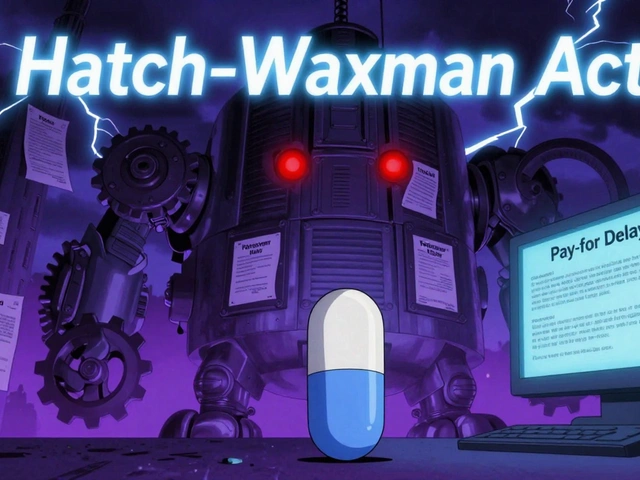
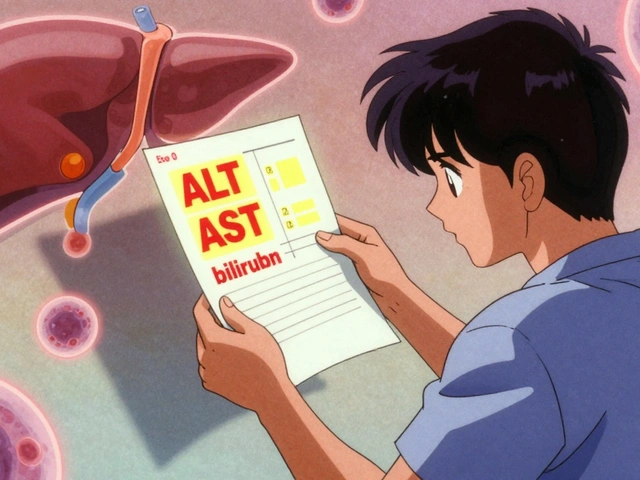
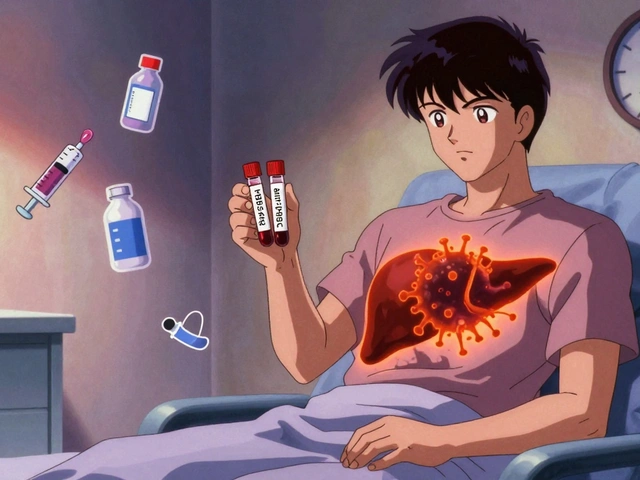
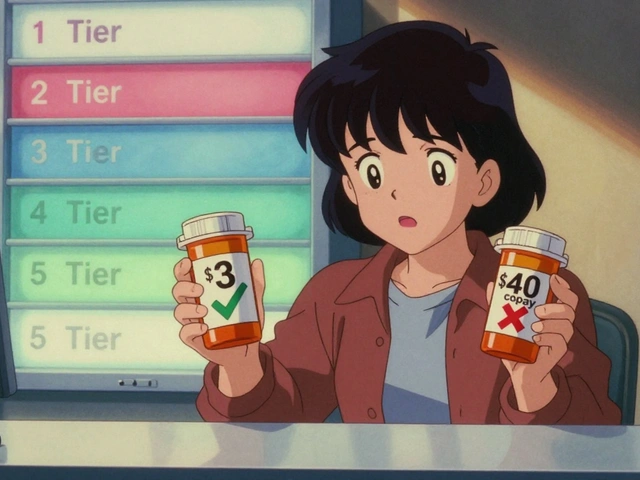
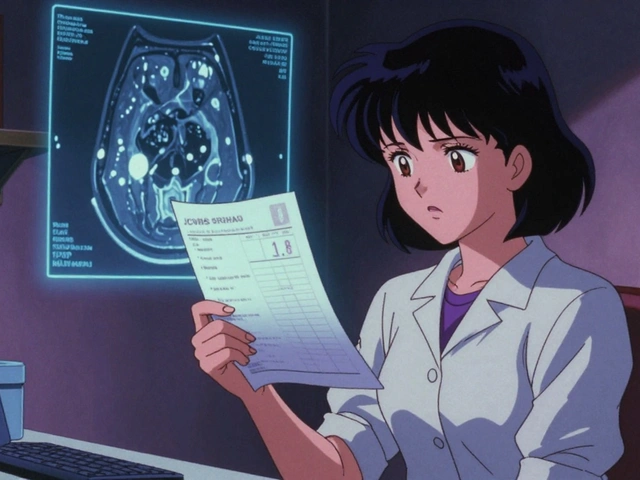
12 Comments
tretinoin 0.025 is for people who dont wanna do the work. if your skin is sensitive go get a different job not a different cream. i used it nightly for 8 months and my skin looks like a baby's. stop complaining and just use it.
I find it profoundly concerning that so many individuals are willing to compromise their skin’s integrity for the sake of expediency. The notion that over-the-counter alternatives can replicate the molecular efficacy of prescription-grade retinoids is not merely misguided-it is scientifically indefensible.
lol tretinoin 0.025? bro that's like using a toothpick to dig a trench. if you're not on tazarotene 0.1% you're wasting your time. and bakuchiol? that's just plant juice for people who think 'natural' means better. wake up.
I can't believe you're still talking about tretinoin like it's the holy grail. 🙄 The fact that you need a prescription for something that basically just burns your face off? That's capitalism for you. Meanwhile, bakuchiol works just as well and doesn't make you cry in the shower. #SkinCareIsNotASufferingContest
i tried adapalene after tretinoin destroyed my barrier 😭 it was like switching from a flamethrower to a humidifier. no more redness, no peeling, and my acne? gone. 10/10 would recommend to anyone who’s been through retinization hell. 🌿✨
The entire paradigm of topical retinoid usage is predicated upon a fundamental misunderstanding of epidermal kinetics. You cannot accelerate cellular turnover without inducing inflammatory cascades-this is not a bug, it is a feature of the pharmacodynamics. To suggest that gentler alternatives are 'equivalent' is to misunderstand the very mechanism by which retinoids function.
so... you're telling me the person who wrote this actually uses all these products? like, for real? i'm just here wondering if anyone actually has time to rotate 5 different serums every night. i use moisturizer and sunscreen and i'm fine.
tretinoin is overrated and everyone knows it. i tried it for 3 weeks and my face looked like a lizard shed its skin. switched to retinol and now i look like i sleep more than 4 hours a night. also sunscreen is the only real anti-aging product anyway
i get why people get scared of tretinoin. i used to break out just from looking at a retinoid bottle. but after i learned to layer niacinamide first and go slow? life changed. no need to rush. skin isn't a race. just be kind to it.
yall act like tretinoin is some american secret weapon but in india we’ve been using neem and turmeric for centuries. you think your 0.025% cream is better than grandma’s paste? nah. just because it’s FDA approved doesn’t mean it’s better. we’re all just trying to look less like a sunburned potato
if you're new to retinoids start with retinol 0.3% 2x a week. wait 4 weeks. then go to 3x. if you're red? go back to 2x. no need to burn your face off. consistency > intensity. and sunscreen. always sunscreen.
Wait-so you’re saying bakuchiol is just as good as tretinoin for wrinkles… but doesn’t cause peeling… and it’s plant-based… and it’s not a prescription… and it’s not $200 a bottle…? So… why is anyone still using tretinoin? I’m confused. Are we being scammed? 🤔